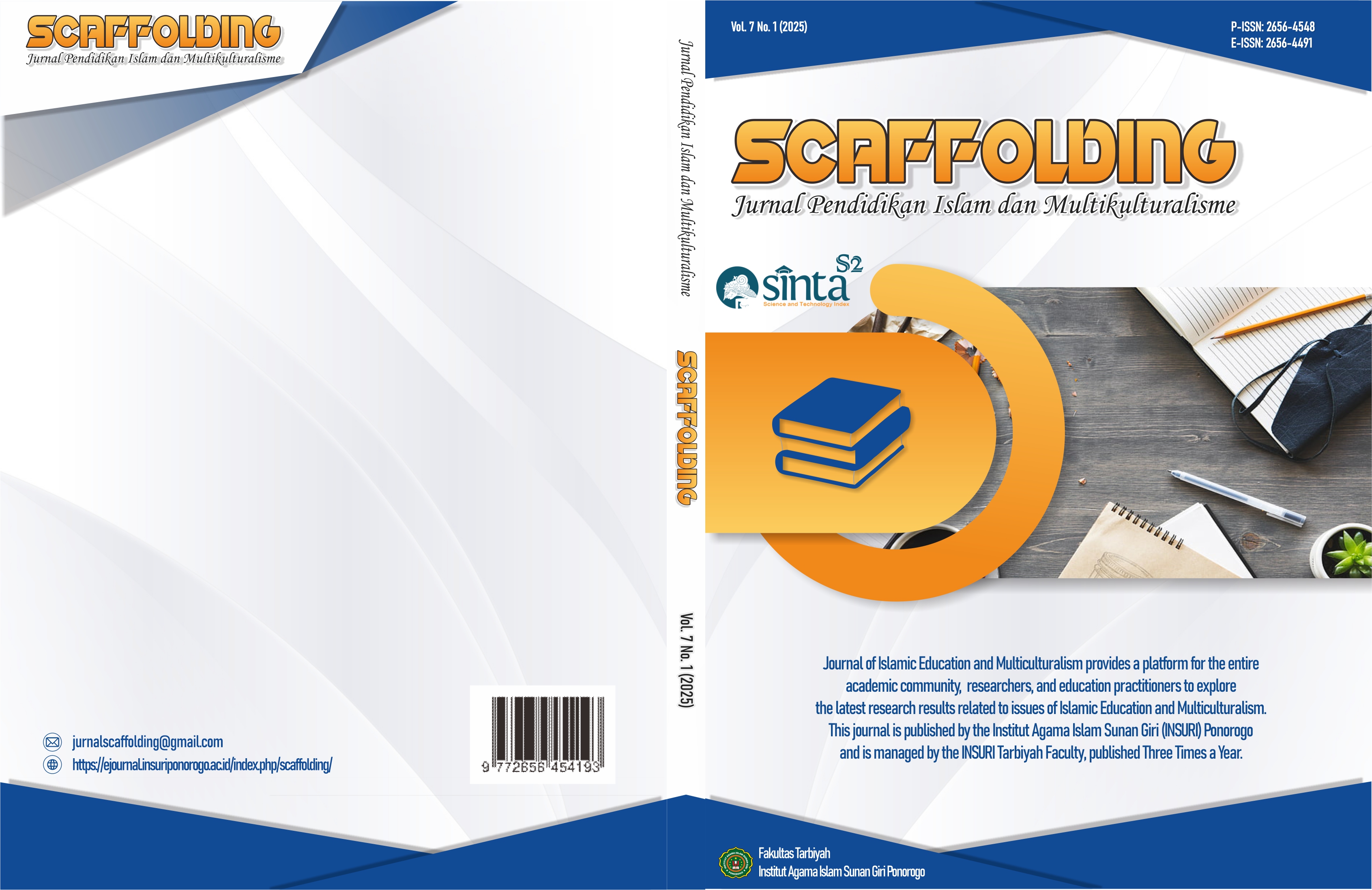Learning Outcomes in Calculating the Qibla Direction Using Spherical Triangles in Law Class
DOI:
https://doi.org/10.37680/scaffolding.v7i1.7293Keywords:
Law Class, Learning Outcomes Evaluation, the Direction of the QiblaAbstract
This article aims to analyse the learning outcomes in calculating the qibla direction using the cosine and sine formulas of spherical triangles in the Constitutional Law class of the Faculty of Sharia and Law at UIN Sunan Ampel Surabaya during the odd semester of the 2024/2025 academic year. This research employs a mixed-method approach, combining descriptive quantitative and qualitative methods through a case study conducted in the Law class. Data collection was conducted using a questionnaire with a dichotomous scale. The collected data includes information before and after the lecture on calculating the qibla direction, which utilises the cosine and sine formulas of spherical triangles. Furthermore, changes in data before and after the lecture are analysed based on the level of change in the responses to the questionnaires completed by students. Based on the results of the analysis conducted, it was found that many students lacked comprehensive knowledge about the direction of the qibla before the lectures, both from a fiqh and a mathematical perspective. Following the lectures, a significant change occurred in the understanding of this qibla direction, which, mathematically, increased by 65.77%. Meanwhile, in terms of calculation skills for determining the qibla direction, before the lectures were held, only a small fraction of the students stated they could calculate the qibla direction for both areas in Indonesia and outside Indonesia. After the lectures, there was a significant change of 74.32% expressing their ability to calculate the qibla direction for areas in Indonesia, as well as outside Indonesia.
Downloads
Published
How to Cite
Issue
Section
License
Copyright (c) 2025 Agus Solikin, Faiz Muhammad Naufal, Abdul Wahab Nafan

This work is licensed under a Creative Commons Attribution-NonCommercial 4.0 International License.
Authors who publish with this journal agree to the following terms:
Authors retain copyright and grant the journal right of first publication with the work simultaneously licensed under a Creative Commons Attribution-NonCommercial 4.0 International License that allows others to share the work with an acknowledgement of the work's authorship and initial publication in this journal.
Authors are able to enter into separate, additional contractual arrangements for the non-exclusive distribution of the journal's published version of the work (e.g., post it to an institutional repository or publish it in a book), with an acknowledgement of its initial publication in this journal.
Authors are permitted and encouraged to post their work online (e.g., in institutional repositories or on their website) prior to and during the submission process, as it can lead to productive exchanges, as well as earlier and greater citation of published work.



